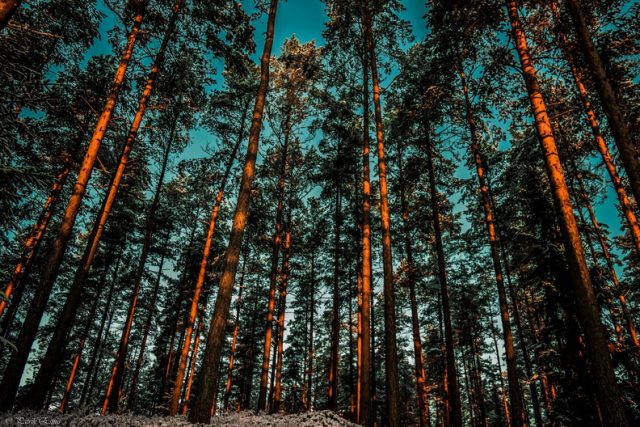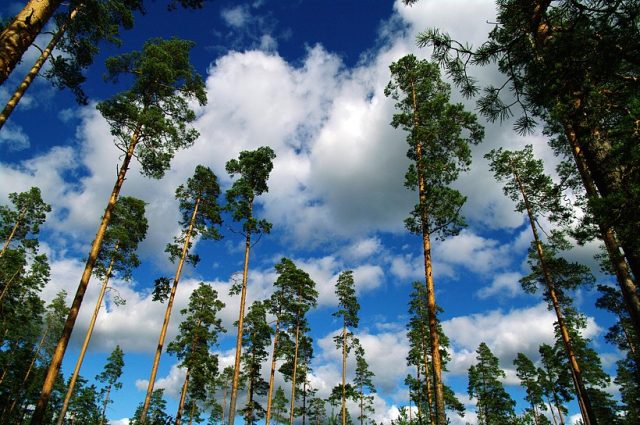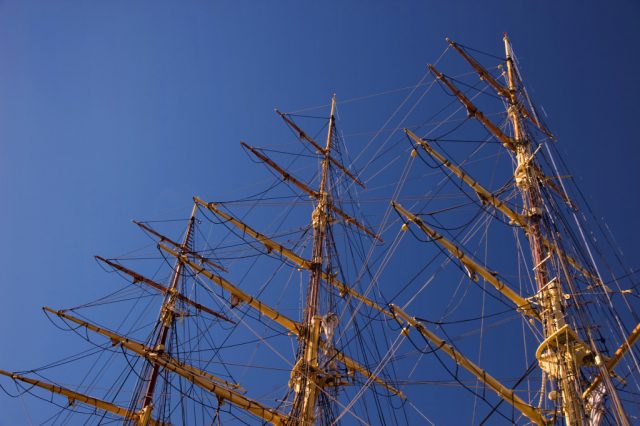Content
The ship pine grows for a century before it can be used for shipbuilding. The wood of such a tree is durable and resinous. This special strength is due to the fact that ship pines are hardened by the harsh climatic conditions of growth: their natural range is the west and northeast of North America.
What pines are called ship trees
Pine trees that meet the requirements for height and structure are considered shipable: for example, the height of the trunk should be about 40 m, and the diameter should be at least 0.4 m. Most often, the red, yellow and white species of these conifers correspond to other necessary characteristics.
Red pine grows on elevations and dry stony soil of sandy loam and loamy types, has fine-grained resinous wood, which has a high density. The trunk of the tree reaches 37 m in height and 1.5 m in diameter. The color of the kernel is usually red or yellow-red, the bark is red-brown, with scaly plates and grooves, the crown is round.
The wood of yellow, or Oregon, pine is strong, while it is light and resilient, and also has a special resistance to fire. The height of the yellow ship pine can reach 40 - 80 m; the size in the trunk diameter is from 0.8 to 1.2 m, branches - up to 2 cm. The bark has a yellow or red-brown tint. Young branches are orange-brown in color, but gradually darken. The trunk is covered with cracks and scaly plates. Crown shape - round or cone-like, small branches grow sprawling up or down.
White ship pine is characterized by wood of lower density and lamination, however, at the same time, the material lends itself well to processing, it is qualitatively impregnated, and does not warp. The trunk is straight, growing up to 30 - 70 m in height and from 1 to 2 m in diameter. On the cut, the kernel is pale yellow, the color of the bark is light gray. Gradually the wood darkens, becomes covered with cracks and plates, which give a purple hue. The white pine species grows in marshy lowlands on clay soil.
Features of ship pines
Red, yellow and white types of pine are most in demand in shipbuilding due to the hardening of wood in cold weather conditions: as a result, the material reaches the required high quality.
So, good specimens of ship pines have the following characteristics:
- tree height - 40 m and more, diameter - 0.5 m and more;
- straight trunk;
- absence of knots and branches at the base of the tree;
- high resin content;
- lightweight, resilient and durable wood.
It takes at least 80 years for a tree with these properties to grow. Specimens over 100 years old are considered especially valuable.
Ship pines are protected from decay by a large amount of resin: thanks to their resinousness and lightness, they also perfectly float along the riverbed. This greatly facilitates transportation to the construction site.
The wood on the north side of the pines is denser in structure and has thinner layers because it has less heat and less sunlight. This makes it sturdier and useful as a material for the most important parts. Ship pine has an original natural pattern, beautiful texture, smooth wood fibers: this material is considered ideal for shipbuilding.
Where ship pines grow in Russia
Pine trees, suitable for shipbuilding, grow in harsh climates, as well as in arid and mountainous regions. In zones with mild climatic conditions, for example, in the Crimea, they are less common.
So, on the territory of Russia, ship pines grow in the forests of the taiga, in the middle zone, in the North Caucasus. There are zakazniks in which they are protected from logging. There is a protected zone with ship pines, for example, on the border of the Komi Republic and the Arkhangelsk region. These lands were once described by M. Prishvin in the story "The Ship Thicket". In 2015, a scientific expedition went to this region. Researchers have discovered pine tracts, among which there are trees up to 300 years old.
You can learn more about the expedition to the ship thickets of the Arkhangelsk region from the video:
There is a well-known natural monument "Masttovy Bor" in the Voronezh region, where the first ship forest in Russia was planted. Here are the oldest pine species from the Usmansky pine forest. The average plantings are 36 m in height and about 0.4 m in diameter. In 2013, Masttovy Bor was assigned to the category of specially protected natural objects.
Even Peter I gave the pine groves the status of reserved, especially protected trees half a meter wide in the cut. Realizing that ship trees grow for an extremely long time, he ordered to lay a mast, or ship forest, for the construction of a fleet in the future.
Peter I chose the Vyborg district (now the Vyborg district), namely, the area near the river. Lindulovki. There he founded a grove, planting the first seeds, and after the death of the Russian ruler Ferdinand Fokel was engaged in the reproduction of ship forests. To limit the free felling of forests and thus prevent their destruction, the king took care of state control with huge fines for illegally cut trees. Nowadays, planting in this area is constantly continuing. In 1976, a botanical reserve "Lindulovskaya Roscha" was founded here.
The use of pine trees in shipbuilding
Before metal appeared, wood was the main material in shipbuilding. The name "mast" pine also earned the fact that it was ideal for making a mast for a sailboat: for this they used a tall slender tree with a diameter of half a meter, its wood is especially strong in the center of the trunk, at the core.
The most durable pine wood was also used for the construction of the hull: first of all, red pine was suitable for this. Now sheathing is made from it for both internal and external decks. It is also suitable for a batten - a frame that is used for fastening the flooring and sewing platforms.
The main application of the yellow ship pine is the creation of spars, that is, the beams that support the sails. White pine, as the least durable, is used as a material for making templates, temporary scaffolding, and various improvised means. The sailors used not only wood, but also resin: they impregnated parts, ropes and sails with it.
In modern shipbuilding, in addition to flooring, wood is also used for the cladding and interior decoration of the ship.
Conclusion
Ship pines got this name due to their special characteristics, which allow them to be used in shipbuilding. Today, the use of wood in this area is limited, but previously pine was one of the main valuable building materials.













